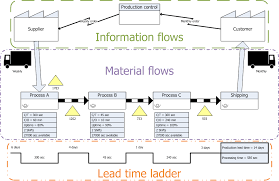The topic of Lean Management may have started in manufacturing, but today’s businesses are looking to the tools to improve other industries as well.
Created by Japanese industrial engineers, the concepts of Lean manufacturing were designed to reduce waste, in a variety of forms. And while developed mid-century, the tools are still being used as a standard in efficient management.
Lean managers look to focus on providing high value to customers while eliminating wastefulness through improved workflows. The concept works to engage customers, vendors and employees in ways that create a feedback system for continuous improvement.
What Makes a Lean Management Leader?
Lean management involves everyone, yet the lean leader needs to be completely on board or “bought in” on the idea of lean practices and continual process improvement. Management must be willing and able to ask probing questions to get to the root of both problems and customer motivations. They must be willing to discover answers they may not like in order to challenge the status quo.
Regarding Customers:
Do you know why your customer buys from you?
Do you know what they value about your business over your competitors?
Are you able to anticipate their changing needs based on what you know about their values, wants, and needs?
Do you know what improvements you could implement that would serve your customers even better?
Regarding Your Team:
Do you have a culture of blame and mistakes or one of “lessons learned”, which fosters a learning environment?
Is problem solving guided with the objective of finding the right problem, root cause and establishing the right resources?
Do you use open-ended questions?
Is there a focus on processes and their actual, tracked results?
Is there a plan in place to discover inefficiencies?
Do you deeply understand the value stream, including sub-processes and their effects?
Does the management team demonstrate Lean values and behaviors?
Does management challenge the status quo?
Does your Lean management team go to the action and use 3Gen?
Gather the information to determine where you are as an organization and where you want to be in regards to lean management. If you discover you need support, a refresher, or even full implementation of lean management practices, consider PBEX, LLC, a leader in Business Process Management, Lean Process Management, Lean Manufacturing, and Organizational Lean Process Improvement.









